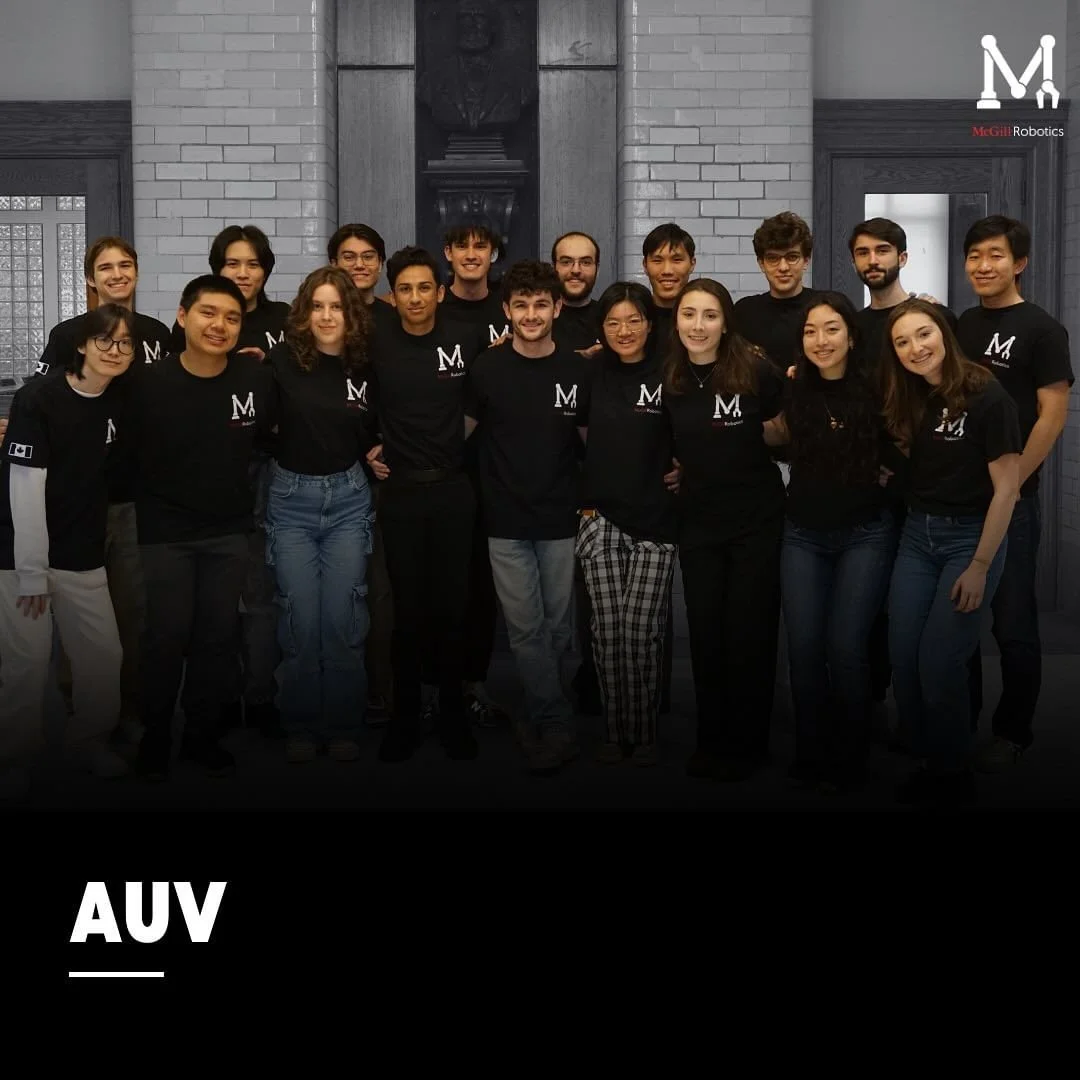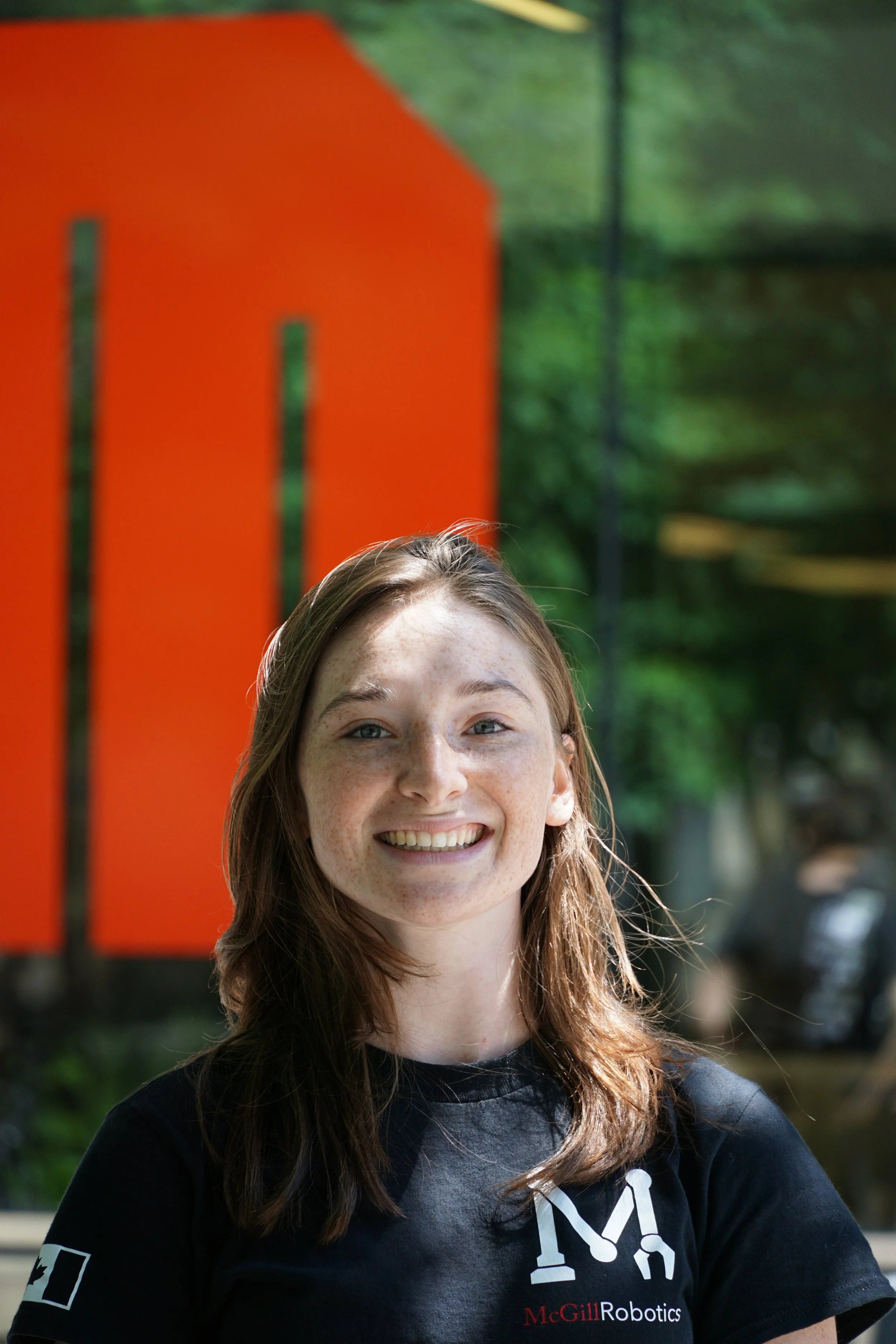
Autonomous Underwater Vehicle
Meet Douglas
Navigating RoboSub, mapping seabeds, and monitoring underwater infrastructure. McGill Robotics’ ClarkAUV is the future of next-generation AUV. Built on the success of several years of team designs, the smallest and lightest McGill Robotics AUV to date. There’s nothing else like it.
Meet Our Team
Over the course of an entire school year, our team of talented engineers has worked tirelessly to produce the AUV representing our team at this year’s RoboSub. Spanning three different sub-divisions of Mechanical, Electrical, and Software, the more than 20 students who bonded together to develop and design ClarkAUV 2.0 are truly some of the most dedicated and exceptional students that McGill has to offer.
Building Robots For A Sustainable Future
In partnership with McGill’s Sustainability Projects Fund, McGill Robotics is developing robots to assist researchers in large-scale environmental studies, from tracking deer populations to monitoring invasive aquatic species, making comprehensive data collection and analysis more feasible.
Douglas
at a Glance
Degrees of Freedom
6 (Surge, Sway, Heave, Roll, Pitch, Yaw)
Power System
Custom Power Governance PCB.
14.8V 20000mAH BlueRobotics LiPo Battery
Propulsion
BlueRobotics T200 Thrusters and Electronic Speed Controllers (x8)
Navigation Stack
SBG Elipse-N IMU
Water Linked A50 DVL
Custom Pressure Sensor
Computer Vision
Intel RealSense d455 (Forward Facing)
Arducam IMX219 Camera Module
Embedded Systems
Arduino Uno Rev3 (Propulsion).
Arduino Micro (Pressure Sensor)
Compute Module
NVIDIA Jetson AGX Orin
Machine Learning
PyTorch
YOLO v8
Software Stack
Robotics Operating System (ROS) Noetic
Ubuntu 20.04 LTS
Python3, C++, C
Douglas
Mechanical Design.
Robust mechanical design meets elegant UI/UX principles: this year we revamped the previous version of Clark to optimize for flexibility, starting with a reimagined chassis that merges symmetry with stability and flexibility, using stainless steel cubes and T-slotted framing. Our streamlined propeller positioning optimizes movement control, housed in a robust, sealed acrylic hull, featuring a sliding shelf for quick electronics access. We've ingeniously overhauled the internal layout with a new sled mechanism, ensuring straightforward access to our PCBs and electronics.
Douglas
Electrical Architecture.
Re-wiring what’s possible for university-level design: Our high-caliber power board delivers robust protection and efficient energy distribution, seamlessly driving the entire AUV from a PCB smaller than an iPhone.
The Sensor Board, a crucial communication hub, interfaces with multiple sensors for optimal data processing. Together, they streamline wiring, enhance safety, and enable real-time decisions - a testament to the unrivaled autonomy and performance of our AUV.
Douglas
Software Stack.
At the core of our AUV's innovative software design: Planner orchestrates high-level decisions, Vision employs machine learning for object detection, State Estimation ensures real-time precision, and Propulsion optimizes movement. Our Gazebo-based simulation with realistic hydrodynamics enables us to rapidly test and tune our code in a pool-like environment.
Meet the Team
























